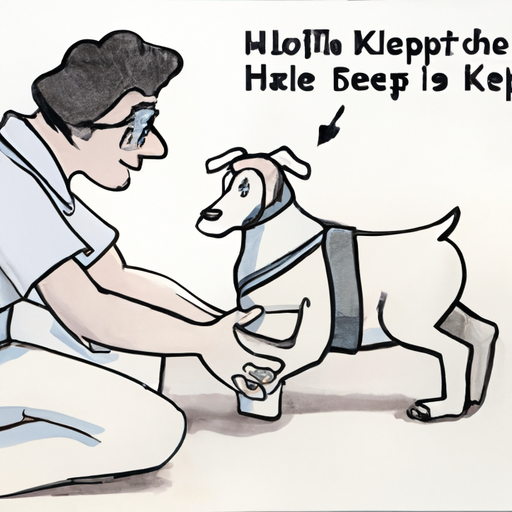Introduction
Let’s face it, being a dog parent can be a challenge. But, nothing can prepare you for the moment when you see your furry friend in pain. One common injury in dogs is a dislocated hip, a condition that can cause severe discomfort and limit mobility. As a caregiver, it’s crucial to know the steps to wrap a dog’s dislocated hip before you can get professional veterinary help. This guide will take you through the process in a detailed and easy-to-understand manner.
Understanding a Dog’s Hip Dislocation
Before we get into the practical steps, it’s vital to understand what a hip dislocation in dogs means.
Hip dislocation, also known as hip luxation, is a condition where the femoral head at the top of your dog’s thigh bone comes out of its socket. This dislocation can either be complete or partial, and is usually the result of trauma like a fall or an accident.
Signs of a Dislocated Hip:
- Sudden limping or inability to walk
- Pain and discomfort
- Swelling around the hip area
- Uneven length of hind legs
Steps to Wrap a Dog’s Dislocated Hip
Now that you’re aware of what a dislocated hip is, let’s move on to the steps you should follow to wrap your dog’s hip. Remember, this is a temporary measure until you can get your dog to a vet.
-
Calming your dog: Your dog is likely to be in pain and scared. Start by calming your dog down. Speak in a soothing voice and try to comfort them.
-
Assess the situation: Look for signs of hip dislocation. These include swelling, limping, and visible discomfort.
-
Prepare the bandage: Gather a roll of cohesive bandage. These bandages stick to themselves, not to fur, making them ideal for this situation.
-
Wrapping the hip: Start by gently lifting the affected leg. Begin wrapping from the lower part of the leg, moving upwards towards the hip. Make sure the bandage is secure but not too tight to cut off circulation.
-
Securing the bandage: Once you’ve covered the hip, secure the bandage with medical tape. Remember to check the bandage regularly to ensure it’s not too tight or loose.
Aftercare and Veterinary Assistance
Wrapping the hip is only a temporary solution. It’s critical to seek veterinary assistance as soon as possible. A vet will be able to professionally assess the situation and may need to perform a procedure called a ‘closed reduction’ to put the hip back in its socket.
In severe cases, a surgical procedure may be necessary. Always follow your vet’s advice on aftercare, which may include:
- Pain management
- Restricted movement
- Physiotherapy
- Regular check-ups
Potential Complications
While a dislocated hip is generally not life-threatening, if left untreated, it can lead to complications such as:
- Chronic pain
- Arthritis
- Permanent limp
- Hip dysplasia
| Complication | Description |
|---|---|
| Chronic Pain | Long-term discomfort in the hip area |
| Arthritis | Inflammation of the joints, leading to pain and stiffness |
| Permanent Limp | Lasting inability to move or walk properly |
| Hip Dysplasia | Abnormal formation of the hip socket that can lead to arthritis |
FAQ
Can I treat a dislocated hip at home?
While you can provide temporary relief by wrapping the hip, a dislocated hip requires professional veterinary care.
How long will it take for my dog to recover?
Recovery depends on the severity of the dislocation and the treatment provided. Your vet will be able to give you a more accurate timeline.
Can a dislocated hip recur?
Yes, especially in cases where the hip dislocation has occurred more than once. In these cases, surgery might be recommended.
How can I prevent hip dislocation in dogs?
Prevention methods can include maintaining a healthy weight, regular exercise, and avoiding situations where your dog might fall or get into an accident.
What is the cost of treating a dislocated hip?
The cost can vary widely based on the severity and the treatment required. Always consult with your vet for an accurate estimate.
Remember, as a caregiver, your priority should be the health and comfort of your pet. Understanding how to wrap a dog’s dislocated hip can provide temporary relief, but always seek professional veterinary help at the earliest.



